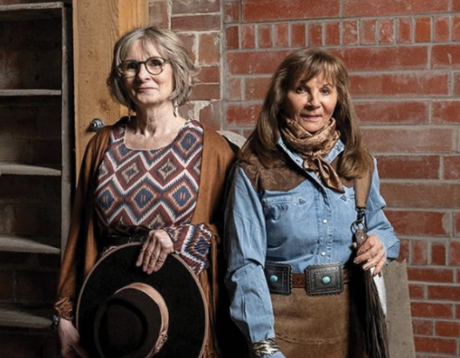 |
Oscar Raymond “Ray” KnightPhoto courtesy Raymond Museum |
Oscar Raymond “Ray” Knight is the only rodeo cowboy, rodeo champion, rodeo stock contractor, and rodeo producer in the world who has a town, a school, a college, and a rodeo named after him.
He was born 140 years ago on April 8, 1872, and raised on a ranch west of Payson, Utah. His parents were Mormon pioneers Jesse and Amanda Knight. Reputedly Ray’s father, Jesse, had a dream that prompted him to dig for precious metals in the nearby mountains. The Humbug Mine came in, and by 1886 the Knights were rich.
Ray Knight married Isabelle Smith in 1894 and had three children: Uarda, Raymond, and Kenneth. Ray, along with his brother Will and their father Jesse, came to (now) Alberta in January, 1901, where they bought thousands of acres of grassland.
The Knight family established a large ranching operation, laid out a town site on the flat prairie, and then built for the soon-to-come townsfolk a church, a park, a school named the Knight Academy, a cemetery, the Knight Sugar Company factory, and they even donated land for a provincial college called the Raymond School of Agriculture.
The town was named Raymond in honour of Jesse’s oldest son.
Ray was placed in charge of the Knight family’s extensive ranching operations. At one time, the ranch holdings (now called the Knight Ranches) controlled some 400,000 acres of deeded land with other leased lands making a total of almost 1,000,000 acres. The livestock included 18,000 head of cattle, 2,000 horses, and 50,000 sheep.
One hundred and ten years ago, on July 1, 1902, Ray started the Raymond Stampede, the first “stampede” in Canada. The first Raymond Stampede was a contest of saddle bronc riding and steer roping between a handful of cowboys from neighbouring ranches.
Bronc buster Deloss Lund of the Hat L Ranch rode the first bucking horse at that first stampede, but in the end, Ed Corless, a cowboy from the McCarty Ranch, was declared the champion rider. Other cowboys included Ray Knight, Dick Kinsey, Frank Faulkner, Jim Austin, and Dave Austin. Knight himself won the steer roping contest with the best time. But there was no prize money; only side bets.
Knight started planning early in 1903 for the second Raymond Stampede. It was the first rodeo in Canada to have entry fees, official contest rules, and prize money. Posters and advertisements were printed, and Knight spent thousands of dollars to have Canada’s first permanent rodeo arena built. It featured an oval race track (engineered and fenced), a covered grandstand for hundreds of spectators, corrals, and a single bucking chute.
Christened Victoria Park, when it was finished Knight donated it all to the town of Raymond. This rodeo grandstand, built just for the Raymond Stampede, is still being used today and is the first and oldest grandstand ever built just for rodeo.
 |
Edward Prince of Wales and Ray Knight, Saskatoon, Sask., ca 1919Photo courtesy Glenbow Museum Archives |
Knight introduced calf roping to Canadian rodeo—he went on to win the Tom Campbell Trophy, and was crowned the World Champion at the North American Calf Roping Championship at Calgary in 1924. In 1926, at the age of 54, Knight won his second Championship at the Calgary Stampede and was awarded the Prince of Wales Trophy.
For some years, Knight and another rodeo producer, Addison “Ad” Day of Medicine Hat, combined their business acumen in a rodeo production company called the Knight and Day Stampede Company. Day, originally from Texas, was one of the founders along with Guy Weadick of the first Calgary Stampede of 1912. Day was the arena director of that rodeo.
Knight produced rodeos and furnished livestock to stampedes in Alberta, Saskatchewan, and Montana. He furnished rodeo stock to the top rodeos in the world at Calgary, Pendleton, New York, and Chicago. He also judged at rodeos including Madison Square Gardens in New York City. For many years he was the rodeo manager and arena director of the Raymond, Magrath, Fort Macleod, and Lethbridge Stampedes. Often he was the rodeo manager, arena director, and rodeo contestant as well.
Knight was the world’s richest rodeo producer and stock contractor, boasting some 2,000 bucking horses. Being a multi-millionaire, Knight was also the richest rodeo contestant and rodeo champion in the world. His interest and involvement in producing, promoting, and participating in rodeo continued to the end of his life, with almost 40 years of direct involvement from 1902 to 1940. As a pioneer and builder in the sport of rodeo—and as a contestant and champion—Knight’s contributions have never been equalled.
At the age of 74, Ray Knight made his Grand Entry into the Sky on February 7, 1947, and was laid to rest on Temple Hill in his hometown of Raymond, Alberta.
















